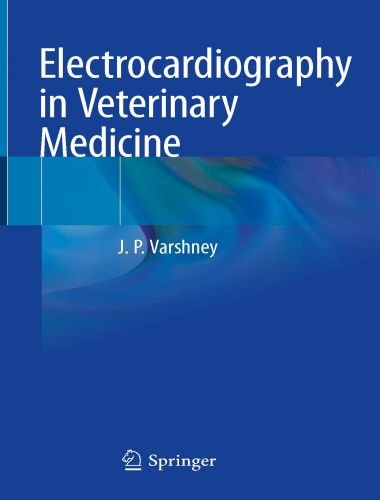Electrocardiography in Veterinary Medicine 1st Edition
By

This book provides essential information on methodologies for recording electrocardiograms in various animal species, including dogs, cats, cattle, buffaloes, sheep, goats, mithun, chelonians, snakes, avians, equines, rabbits, and the Indian gray mongoose.
It also reviews the electrocardiographic physiology, generation of electrocardiograms, and normal criteria for various animal species; electrocardiograms in health and disease; and the interpretation of abnormal electrocardiograms, cardiomyopathy and arrhythmias, with corresponding treatment protocols.
Further, it presents several approaches to interpreting the electrocardiograms of dogs, cats, ruminants, tortoises, pigeons, and other animals, offering a valuable resource for all veterinary students, scientists, and physicians wanting to make greater use of this valuable non-invasive tool in the diagnosis of heart diseases and general health examinations.
In routine clinical practice, many of us take many things for granted and leave many organs unexamined when there is no direct history or pathognomonic symptom related to particular organ. Vital body organs are affected both by primary dis-eases of the organs as well as by diseases of other organs. Hence, there is no compromised approach in diagnosis. The heart, being a central vital organ, is affected by both cardiac and non-cardiac diseases and has a potential to influence the disease outcome. Practical Physiotherapy for Small Animal Practice
Disturbances of cardiac rate, rhythm and conduction are quite common in almost all species of animals. Cardiomyopathy is of great clinical significance in dogs and cats. Cursory auscultation of the heart, most common technique of evaluation of the heart, fails to differentiate the type of arrhythmia and to assess the size of the heart chambers particularly in dogs and cats.
Next step examination of the heart by electrocardiography overcomes these lacunae. Proper and detailed examination of the heart in ailing animals adds to understanding of the disease in totality and thus is of great value in undertaking rational therapeutic measures and predicting clinical outcome of the case.
Direct Link For Paid Membership: –
